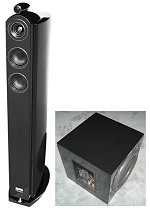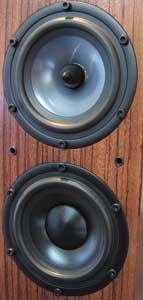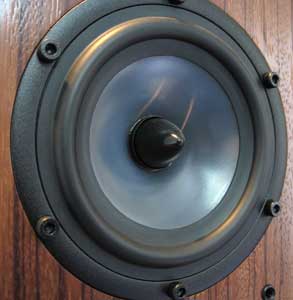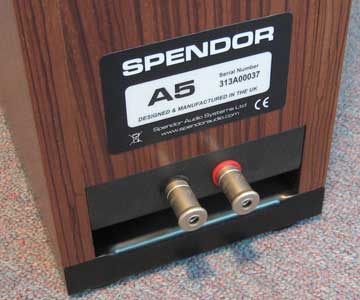Introduction
Ah…British Hi-Fi. Say no more and an entire wing of audiophiles suddenly get giddy. Indeed such names as B&W and Meridian have done more than just establish new high-watermarks of performance: they have each virtually created their own markets in which they are to this day the only real players. More generically, “the English sound” is a term which in years past described a warm laid back musical speaker or component, contrasted with “the German (or Japanese) sound” which was taken to mean a more forward, slightly treble heavy sound.
That was then, this is now. When I was offered a pair of speakers for review from Spendor, renowned speaker manufacturer since 1969, I simply had to take advantage and hear for myself the state of British Hi-Fi today.
The whole audio (and video) scene these days is far more practical, perhaps pragmatic, than years past. Components, even speakers, which have any character at all are the poor ones. The hypothetical ideal speaker is so true to the signal, applying no bias at all, that we should be able to subjectively evaluate only the recording itself. Is Spendor up to the task? Lets find out….
Specifications
- Design: 2.5-way, Floor-standing, Ported
- Drivers: One 22mm Dome Tweeter, One 150mm Midrange, One 150mm Woofer
- MFR: 60 Hz – 20 kHz ± 3 dB
- Nominal Impedance: 8 Ohms
- Sensitivity: 86dB/W/M
- Crossover Points: 700 Hz and 4.5 kHz
- Power Handling: 150 Watts
- Dimensions: 31.5″ H x 6.5″ W x 10″ D
- Weight: 35.2 Pounds/each
- Finish: Black Ash, Cherry, Light Oak, Wenge
- MSRP: $2,599/pair USA
- Spendor
The Design
Spendor has a rich history reaching all the way back to work done at/for the BBC in the 1960s. Today they are a dedicated speaker company who manufacture all their own mid/bass drivers (tweeters are made to their spec and design by a 3rd party) and they simply refuse to “go to China” with any of their product.
The subject of our review is the brand new A5 model, billed by Spendor as “compact high performance floor standing loudspeakers”. Indeed, at a mere 790mm tall (just shy of 32 inches) they have a distinguished charm about them. The presentation is that of a very traditional speaker, only scaled down.
The A5s are a classic ported 2-1/2 way speaker design with the tweeter crossing over to the mid/bass driver at a rather high 4.5kHz, and the bass driver low-passed at 700Hz. 2-1/2 way is nothing new, in fact its very old, but we’ve witnessed an increased popularity among speaker manufacturers due in part no doubt to the fact that you get almost all the benefits of a true 3-way design at lower cost and an easier time manufacturing consistent units.
The Spendor spec’ed 22mm tweeter is of the classic “soft” (textile) variety with the usual boast of fluid cooling/damping given. The Spendor built 150mm mid/bass and bass drivers, although similar in their magnesium alloy chassis, do differ in their particular cone material and driver structure, the former employing a true phase cone (as opposed to a cone shaped dust cap) which in my experience has proven to improve a driver’s upper end, explaining in part how Spendor gets away with such a high crossover frequency. The cabinets are, for lack of more creative phraseology, perfect. The underlying MDF is, we are told, reinforced with plenty of circumference bracing and seems remarkably solid and inert, yet they are not ridiculously heavy. Our sample was clad in a deep toned Wenge veneer, with Light Oak, Cherry, and the requisite Black Ash offered as well. The craftsmanship is almost too good in that on initial inspection there was question as to whether it was real wood or a textured vinyl wrap: The wave in the grain was perfectly the reciprocal one speaker baffle to the other. The style of the cabinet is simplistic: 6 flat sides, very reminiscent of yesteryear, which to me is a welcome breath of fresh air when the current trend leans towards organic curves and non functional adornments.
The base of the cabinet is comprised of an interesting bottom “plinth” which forms in part the slot-port at the bottom rear, above which are the substantial WBT binding posts. It is in fact delightfully refreshing to see a high end product like this shunning the usual strapped double inputs (the dubious notions of bi-wire and to a lesser extent passive bi-amping clearly and thankfully being close to put to rest at this point).
A quick tangent here to acknowledge that demand for the A5 is apparently exceeding supply at this point, so our sample was one which is being passed around. I mention this only to explain why I’m not giving you my usual photos of drivers pulled from the cabinet (I didn’t want to jeopardize the product’s integrity for the next recipient). That said, the literature is pretty clear on what you will find inside in terms of crossover components and wiring. Suffice it to say without regurgitating the brochure, all of it simply top-shelf.
One practical note I’d like to make is that the A5s come with excellent spike feet which thread into the plinth… but that’s it. If you have hardwood floor (or any other surface you don’t feel like impaling) then you are out of luck, or at least on your own to find a solution. Given the popularity of hardwood these days and the fact that, with an area rug of suitable coefficient, it can be part of an acoustically sound room, it seems rather short sighted of Spendor, given the asking price, not to provide a set of alternate rubber feet.
In Use
Not once but twice prior to solidifying the review I was “warned” that these speakers “need a really good amplifier to sound their best”. Well I didn’t start reviewing speakers yesterday so I knew that between the lines what was really being said was “the A5’s efficiency is unusually low and they need more power than a typical speaker”. Not that there is anything categorically wrong with a speaker which has a lower than average sensitivity, but there is a certain irony, and Spendor is not to be singled out here, when smaller less expensive models practically require rather expensive accompaniment (at least if you want them to maintain a semblance of output). It is ultimately a design trade off choice: by definition a relatively smaller speaker has to give up efficiency in exchange for extended frequency response, and to a lesser extent linearity. Spendor has chosen to favor sonic integrity over efficiency, and has somewhat offset this by making sure the impedance is as close to 8ohms throughout the speaker’s range as possible (they quote a “minimum” of 5ohms at some point in the spectrum) making the A5 an “easy” load for even the most modest of amplifier topologies, but like love in Hollywood, that only goes so far.
That point aside, the A5s are on the whole simply marvelous. They spent the first couple weeks in our acoustically unfriendly living room and there managed quite well. Their fidelity is by all accounts not skewed or “voiced” per say but stays quite true to the signal and they are able to maintain good balance and imaging, even in less than ideal acoustics, which suggests much of their mid and upper end energy is thrown forward with the balance (the total power response) being on the smooth side. In this environment we tested the A5s with modest receiver-caliber amplification and as expected were tangibly limited in overall output level.
Next we moved them to our very intimate but acoustically engineered theater. As expected the A5s really took off with a razor sharp sound which never fatigued, even when listening sessions started being measured by hours instead of minutes. While difficult for any conventional speaker to compete with the focus and control afforded by the 3-tweeter array and clustered driver arrangement of my reference M&K MPS2510s, the A5s upper end is in fact close in character in that there is no character per sé which to me is excellence defined. They are somewhat disadvantaged by their slight stature though: with any normal seating the tweeter ends up quite a bit lower than the ear plane and they end up exhibiting a laid back response through the crossover and tweeter’s range. Elevating them even just 4″ on blocks proved to yield easily detected improvements in this regard, putting them more on par with my reference. Regardless, the speakers are in fact capable of some serious output so long as the amp behind them is up to the task. Indeed my aged but venerable Rotel coaxed decidedly more output from them, but it was hard to overlook how the system still lagged behind in overall headroom as compared to other more efficient speakers.
Bass, which is always difficult to gauge since it is so very dependent on the room, I define as quite satisfactory given the size and compliment of driver. Under the right circumstances one can indeed realize output “in-room” down to 40Hz, or even 30Hz, though this may not be the case for all installations. In the living room they sounded ever so slightly fat, but in the theater the bass was quite tight, with a delicious, almost latent quality to it which seemed commendable given the smaller drivers.
Conclusions
Spendor impresses and inspires with excellent components, stellar construction, and down to earth engineering and design. The slight stature of the A5s physical presence makes them more than welcome in smaller rooms and a most flexible speaker overall. Their sound is decidedly and delightfully neutral with a freedom from treble sharpness or mid range smearing. Bass is genuinely articulate if not prodigious, and of course the latter can always be addressed by the addition of a sub woofer of suitable caliber, which the A5s should by all accounts blend well with under proper crossover (“bass management”) implementation.
The only reservation I have with them is not the price, which although appreciable, is in my estimation efficient in that it all seems to be going “where it counts”. Rather it is the aforementioned sensitivity which concerns me in that subjectively they seemed even less efficient than the quoted sensitivity of 86dB (comparing them to a couple other speakers we had on hand at the time). Its not a deal breaker but while we always recommend trying a speaker out in your own home with your own hardware before committing, here the notion is simply even more critical.
That point notwithstanding the A5s are definitely worth the trip to a dealer for audition should they be within the available budget.






